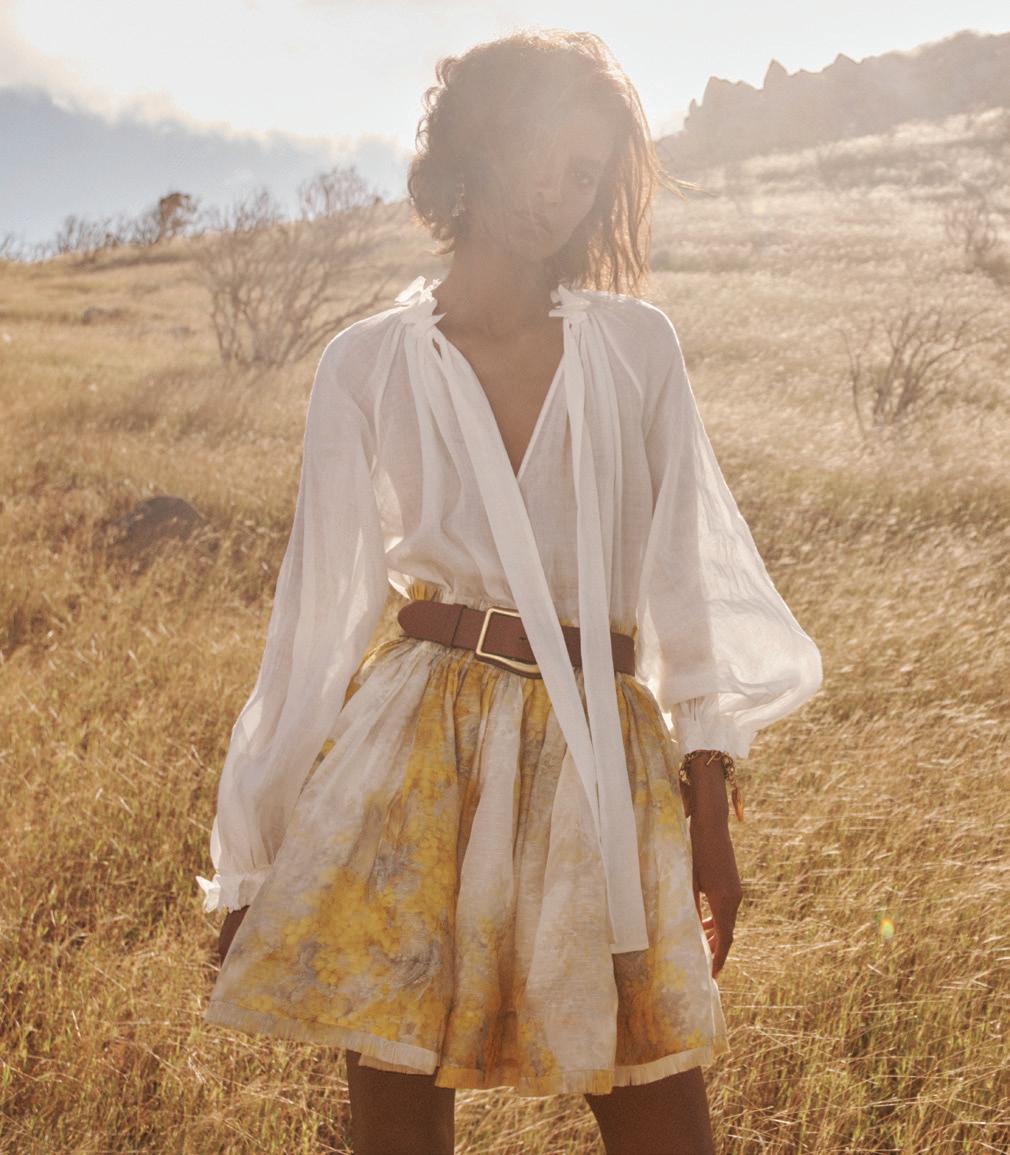
5 minute read
PASSION FOR PETALS
Petals PASSION FOR
History’s love affair with florals has stood the test of time
BY JESSICA SUTTON The floral print may not be groundbreaking (according to Miranda Priestly in The Devil Wears Prada,) but they sure do win over the hearts of top designers every spring.
ZIMMERMANN
[ABOVE] BOTANICA BUTTERFLY BLOUSE, $480 BOTANICA WATTLE FLIP SKIRT, $695 WIDE LEATHER BELT, $295 [LEFT] BOTANICA BUTTERFLY GOWN, $1,950 NARROW WAIST BELT, $165 There's something uplifting and blissful about florals — whether they are dainty prints or bright blooms, it's a trend that just won't end. Historically, flowers have spoken their own language. Roses signified true love, orchids were a sign of elegance or wealth, daisy's expressed purity, and sunflowers represented loyalty. The symbolism may have lost its luster over time, but flowers will always tell a story that continuously conforms to the current day and age. The unapologetic print is mostly known for its heavy influence in the '60s and '70s. Think beyond your grandma's wallpaper or your mother's retro sofa to romantic botanical gowns and blouses that were a staple during these decades. Rarely a season passes by without the influence of retro floral designs on the runways or in our wardrobes.
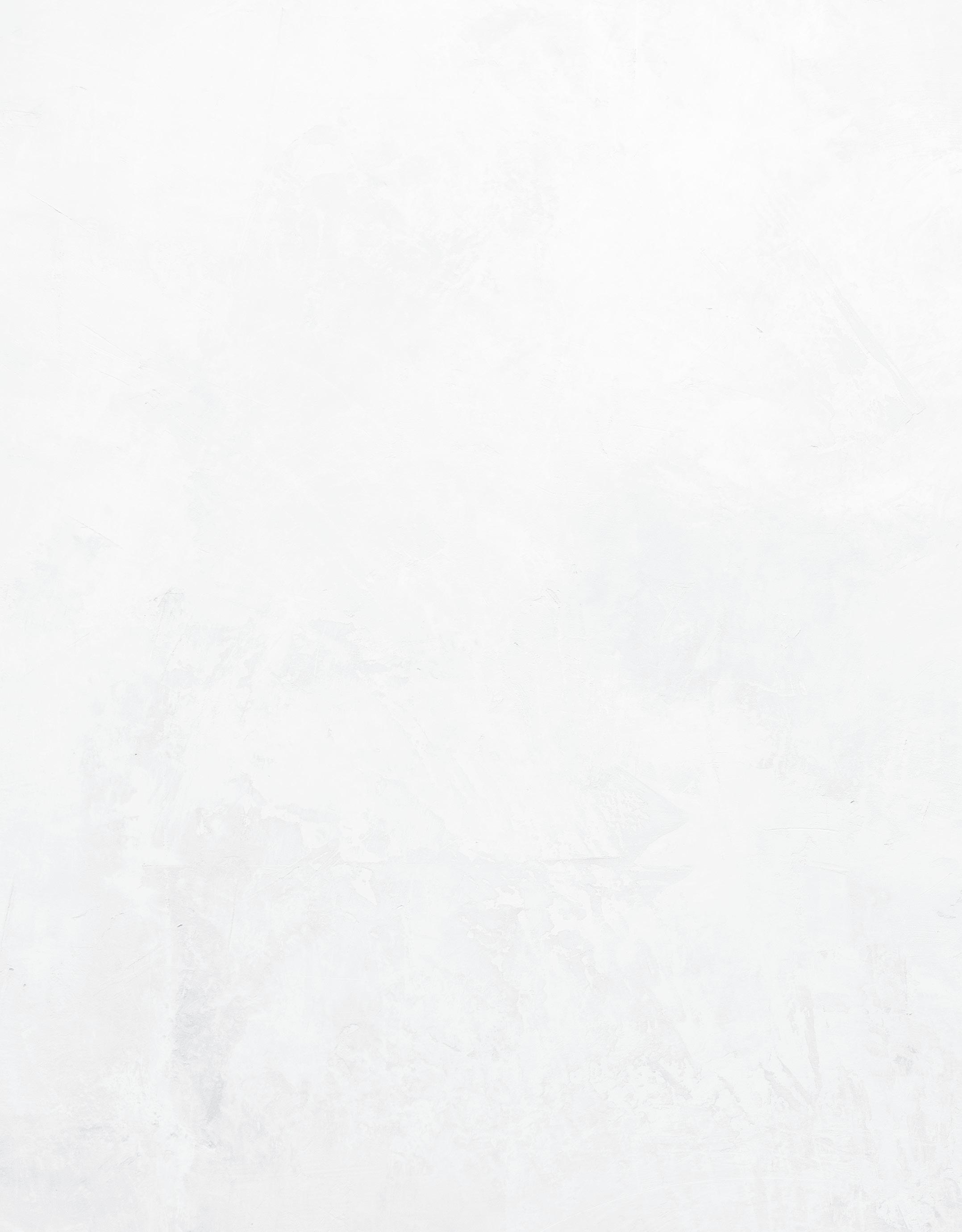
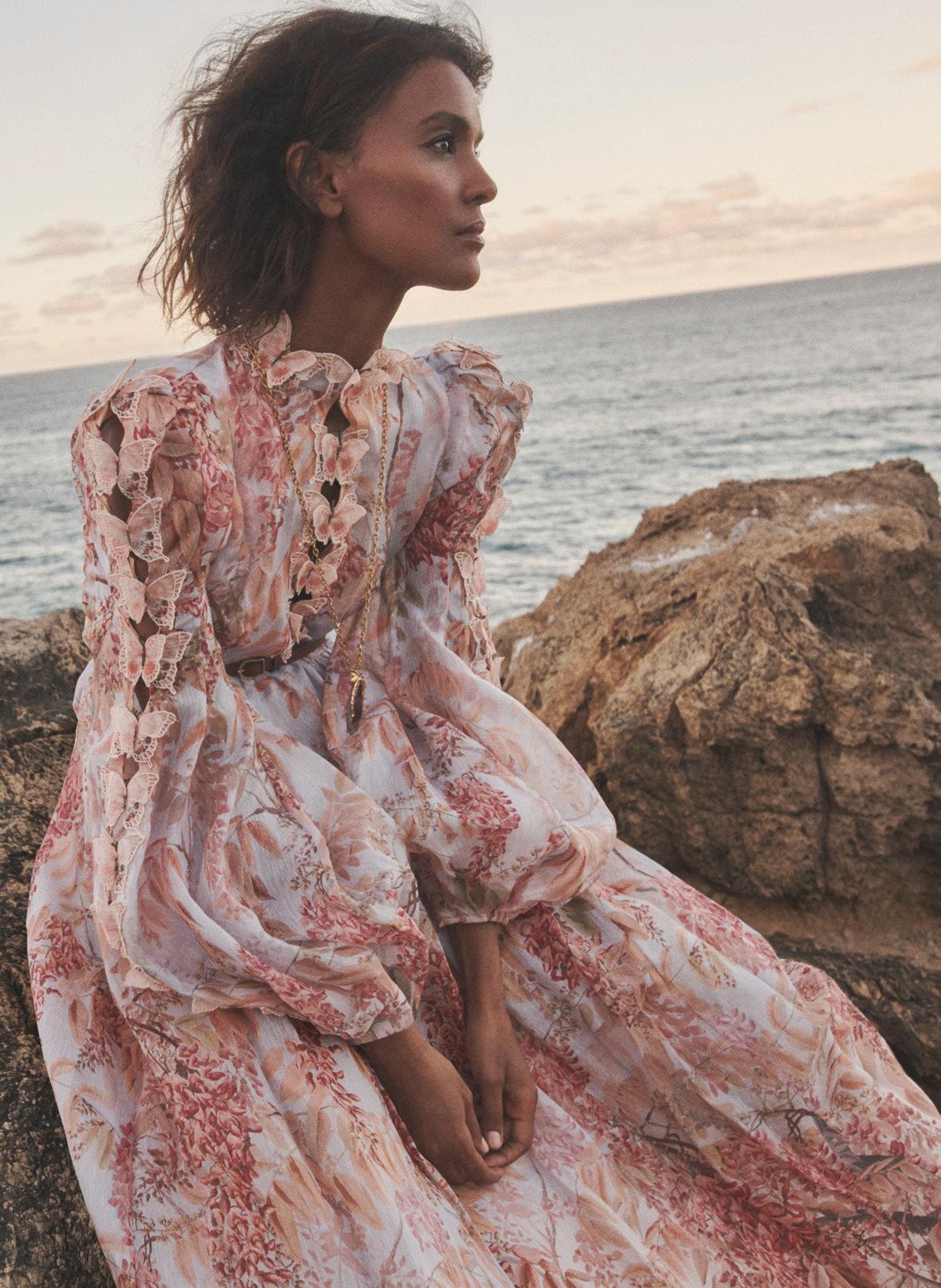
But this season, florals are more significant to our world than ever before. Just like in the era of the Great Depression, the floral print is a breath of life and light into a time of social and economic struggles. Color is our comfort, and florals our freedom. Not only did colorful trends skyrocket during the pandemic, but so did playful patterns. When we can't control what's around us, historically, women tend to find freedom in what they wear. Spring is here and floral designs have sprouted once again. Take a tip from our ancestors and celebrate the season by wearing a print that signifies hope and new beginnings.
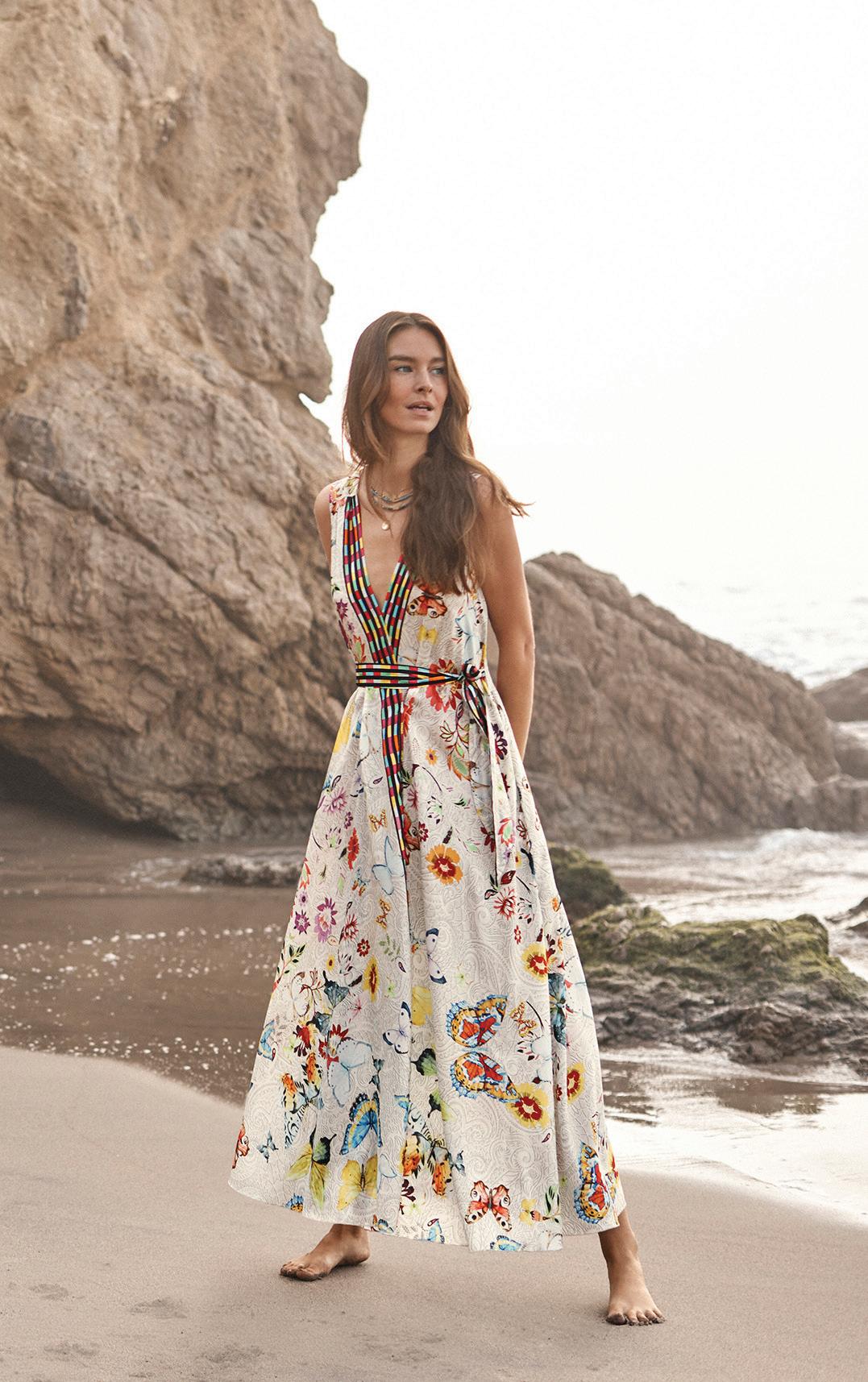
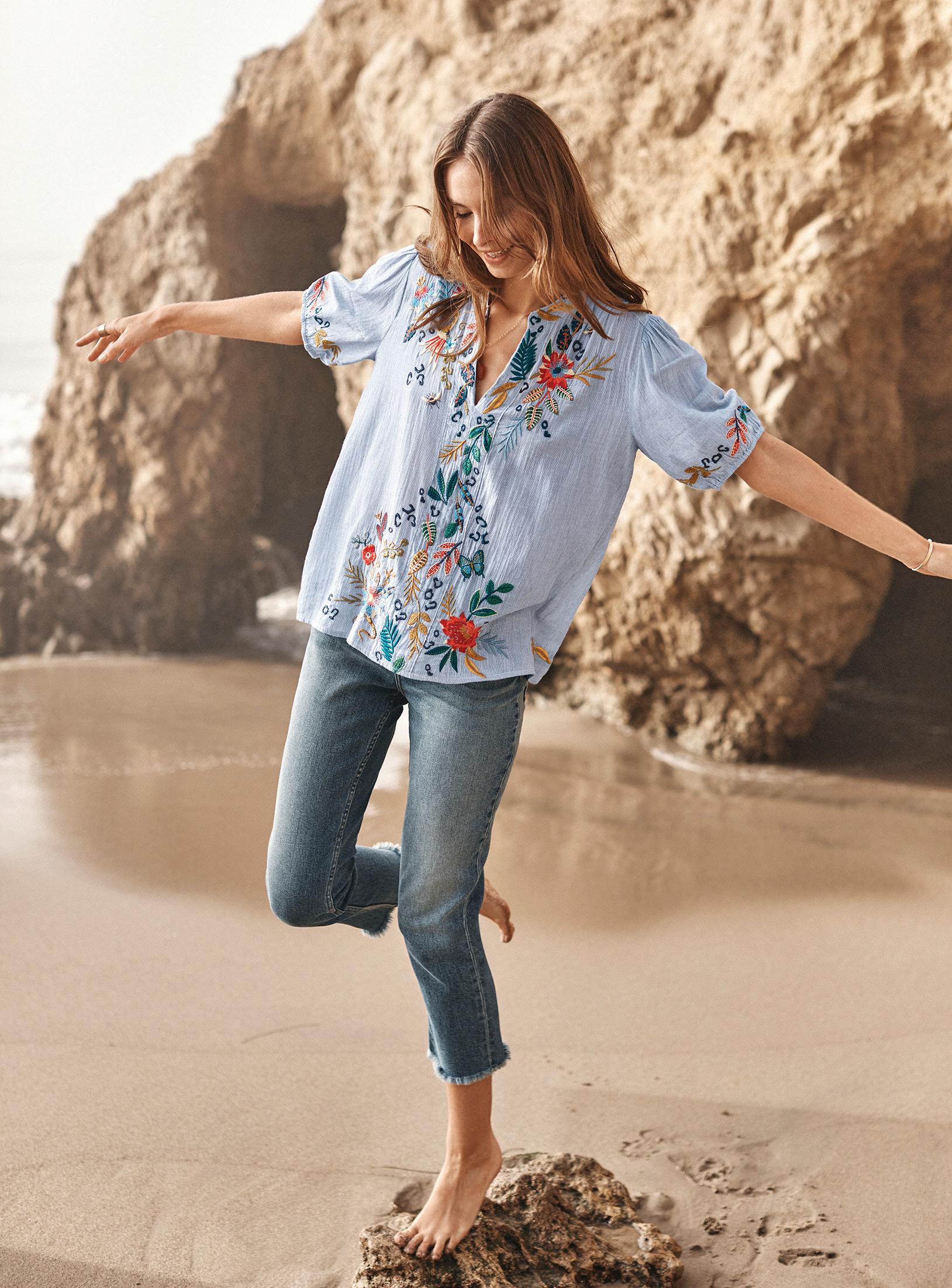
JOHNNY WAS

[CLOCKWISE FROM TOP] EDITH DRESS, $435 INDRAA PUFF SLEEVE EFFORTLESS BLOUSE, $225 AMALFI KIMONO, $525



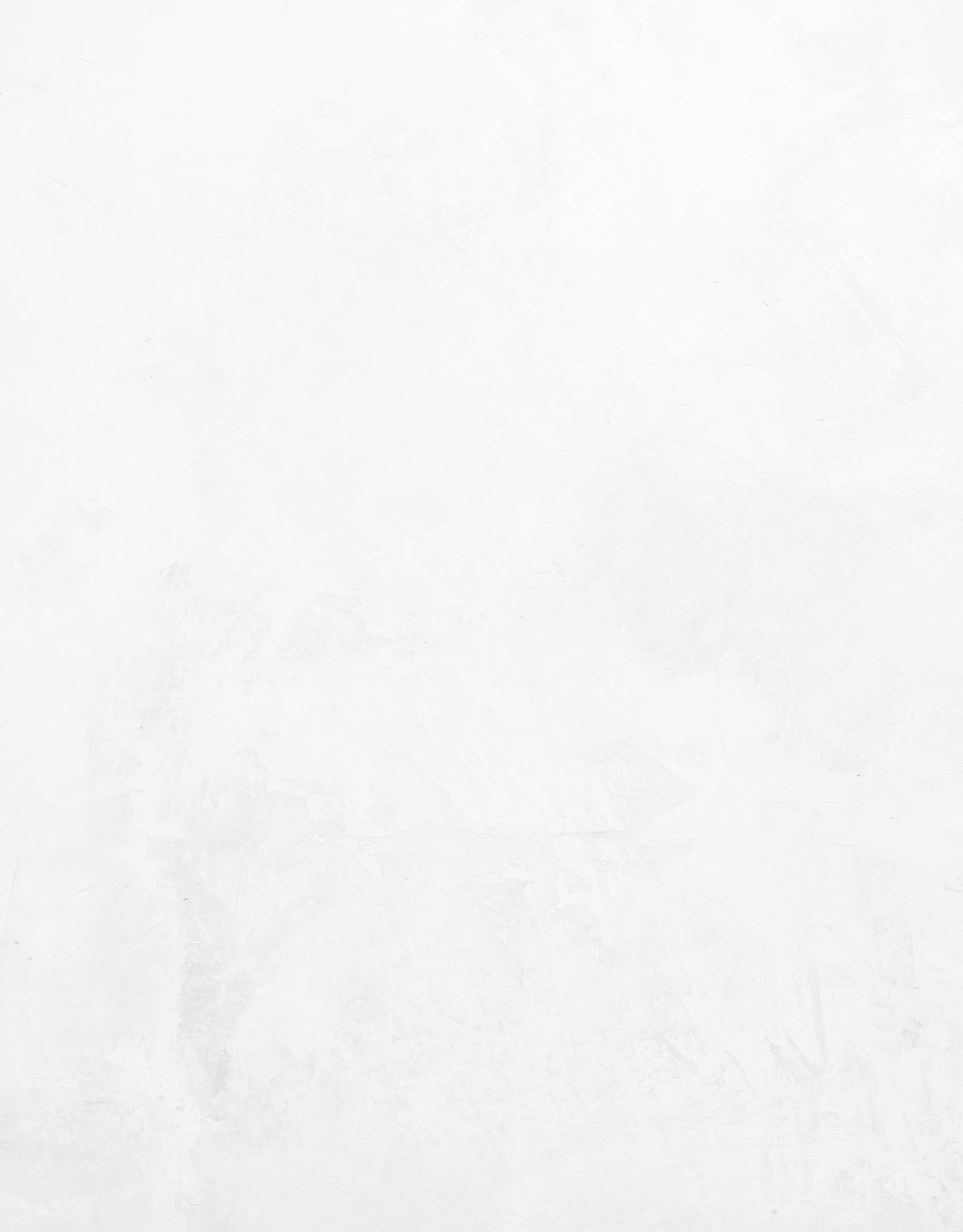
LOVE SHACK FANCY
[LEFT] NESSA TOP IN NIGHT SKY GLOW, $265 [RIGHT] SALIMA DRESS IN RAINBOW SKIES, $525
ROOLEE
[RIGHT] WISTERIA DREAM FLORAL MAXI, $58 [BELOW] VON TRAPP TIERED MAXI, $66



Q

REBECCA TAYLOR
FLORAL CROCHET SHIFT DRESS IN MILK $495
A
WITH REBECCA TAYLOR’S, STEVEN CATERON
REBECCA TAYLOR
RUCHED OSAKA DRESS IN BUTTERCREAM COMBO
$295
Steven Cateron took the reins of Rebecca Taylor’s design department after 10 years at Club Monaco. His first order of business was to edit and consolidate the collections, bringing Tailored Rebecca Taylor, La Chemise, and La Vie back under the Rebecca umbrella. For his debut collection, Cateron took inspiration from vintage imagery, delicate embroidery, and antique pieces to guide his creative process and convey a new kind of casual elegance. Silhouettes derived from ‘50s couture techniques and elements of ‘70s sensuality feel familiar yet modern. Newness in the form of pleats and plisse add volume and a touch of romantic drama. Set against a backdrop of the city, the new Rebecca celebrates emotion, individualism, and the glorification of the past.
Q: What are your goals as the new designer for Rebecca Taylor?

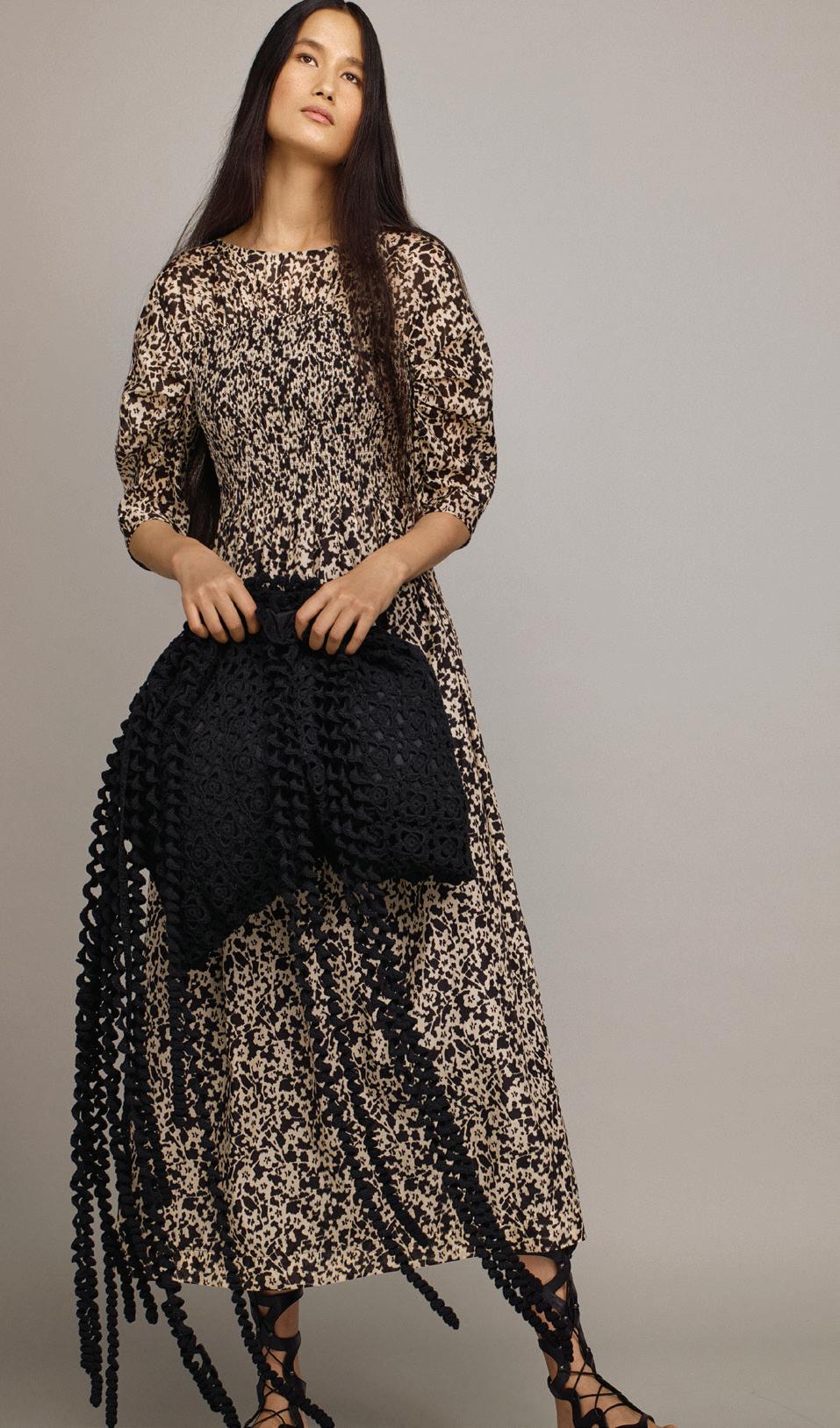

A: My intention is to bring a sense of romance to every occasion to get dressed. I aim to apply feminine details to clothes in new ways — and as there have been fewer reasons to put on a dress in the last year, we have imbued in many other garments a more relaxed, less studied sense of femininity and sophistication; it appears throughout in a special knit technique on a sweater, a different shape for a pant, a hand-drawn print on a jumpsuit. There are plenty of ways to convey sensuality with more relaxed clothing.
Q: What was the inspiration for your debut collection?
A: Spring 2021 is about Art and Romance — nostalgic vintage fashion, art glass, Beaux Arts architecture, magazines from the sixties, an expressive sense of self. It was a collection designed from home, and I think that resonates throughout the collection, the rewarding practice of surrounding oneself with beautiful things.
Q: Was there a pivotal moment in your life when you decided you wanted to become a designer?
A: The first time I saw my grandma make clothes I was intrigued by how a paper pattern ultimately became a piece. In high school, I took a summer sewing class at a college in Pasadena — the whole class was older ladies — they told me I had a gift for it, said I just knew what to do. Most people in the class made a basic shirt. I made a suit for my grandma, and the ladies in the class told me this was going to be my career.
Q: Who inspired your early designs, and who inspires you today?
A: The way that my mother styled herself in feminine and romantic clothes to feel good and project confidence as a single working mom of three young boys inspired me then and inspires me now.
Q: What are some of your go-to styling practices when it comes to florals?
A: I work with a variety of print artists and dealers of vintage textiles, whose work we reference, then work together to reinterpret and often hand-paint as exclusive new designs for us. When approaching a season, my team creates prints that evoke the seasonal message that the customer can also come back to and wear in many different ways. And the base of the fabric is just as important as the artwork itself — that dynamic is something we work hard at to make seamless, but also create a tension between — that way, the end result is not such a literal reiteration of the original art that inspired us. To create depth, we print on jacquard and organza, and we also employ warp printing — that’s when the yarn is printed before it’s made into fabric — there are many different ways we look at print.









